A dangerous Persian Cat: F-14A, IRIAF
F-14 Tomcats in Iran
It is not often that two political mortal enemies are able to deploy the same high-tech weapons systems - and that one has supplied the other with this equipment for good money. In the case of the Iranian F-14 Tomcat, however, this was indeed the case at the end of the 1970s. A brief look at the history of this arms deal reveals something remarkable!
Since the mid-1970s, the USA had had a highly potent fighter aircraft in its arsenal, the F-14, which was unparalleled anywhere in the world. Valuable experience from the air war over Vietnam had gone into the development of a twin-engine, Mach 2-capable swing-wing aircraft, which had been designed primarily to protect carrier groups from Soviet bomber and missile attacks. For this purpose, the new carrier fighter was adapted to use the AIM-54 Phoenix guided missiles developed in parallel with F-14.
The mistakes made with the failed naval version of the F-111 were not to be repeated; for example, the weapon pylons were attached to the central fuselage section rather than under the pivoting parts of the wings, thus saving a lot of weight and complicated mechanics. Although measures like these kept the F-14 lighter than the F-111, the "Tomcat" still remained the heaviest US carrier fighter ever built. A fully loaded Tomcat weighs 33.7 tonnes, 7300 kilograms of which are accounted for by the internal fuel capacity alone.
This impressive weight was probably also due to the installation of the powerful AN/AWG-9 radar system, which enabled the aircraft to engage several targets simultaneously and also enabled the Tomcat to carry out radar surveillance over a wide area.
The AN/AWG-9 radar also provided the basis for the deployment of the long-range AIM-54 Phoenix missiles. Up to six of these four-metre-long, half-tonne missiles could be carried on a mission flight. As further history will show, both the "AWACS" capabilities mentioned and the use of the deadly AIM-54 were to be used successfully on a large scale by the Iranians in the First Gulf War.
But how did this US high-performance combat aircraft come to Iran? Under the auspices of the Cold War, the empire of Iran/Persia had been supported as an outpost of the West from the middle of the 20th century. Western influence in this country, important because of its mineral resources and geostrategic position, was accorded great weight.
In concrete terms, this meant above all the generous and quite lucrative sale of high-quality military equipment to the government of the controversial Shah Resa Pahlewi. In the mid-1970s, under the personal direction of the regent, himself a trained fighter pilot, the decision was made to purchase 80 F-14 Tomcats together with a total of 714 AIM-54 Phoenixes.
The equipment of the Iranian F-14s corresponded to that of the American Tomcats down to the details that did not affect the combat value. However, the capabilities of the AIM-54 had been "downgraded", but the missile remained a deadly weapon, as Iran's opponents would soon learn. By the time the Shah was overthrown, a total of 79 of the 80 aircraft ordered had been delivered to Iran, and the ordered number of AIM-54s had also been delivered.
An interesting and little-known fact is that Grumman, which had overstretched itself financially with the development of the Tomcat, was saved by the deal with the Shah alone. A million-dollar loan from Iran's Melli Bank made it possible to continue building the purchased F-14s and saved Grumman financially.
In 1979, a revolution swept the Shah's government from the Peacock Throne and Iran was transformed into an Islamic God State. The repression of the new regime, which had fallen out with the USA, immediately and severely affected the pilots and technicians trained for the F-14. The crews trained in the United States, belonging to the elite of the empire, were now under the general suspicion of being "pilots of the Shah", considered unreliable, even traitors. Most of them were imprisoned, some were executed, and the survivors had to fear for their own freedom as well as for their lives and the lives of their families.
When the First Gulf War broke out in 1980, the year after the Islamic Revolution, with an invasion by Iraq of Iran, which had become a state of God, the F-14 fleet was in ruins. The first phase of the conflict, which quickly grew in intensity, was devastating for internationally isolated Iran. In the light of impending defeat, the Iranian leadership reluctantly began to draw on the ostracised pilots and potential of the F-14. Over time, more and more Tomcat pilots emerged from detention, most choosing, perhaps driven by professional ambition and love of country, to serve the regime in its military emergency.
Iraq had nothing comparable to the F-14. Both as a "dogfighter" and by using the AIM-54, the Tomcat proved to be a superior opponent. The first kill came in the first days of the war with the M61 Vulcan Gatling gun, which claimed an Iraqi Mil-Mi 25 attack helicopter. However, the majority of subsequent aerial victories were to come from the AIM 54 Phoenix fired from long range.
Incidentally, the experience with the AIM-7 Sparrow and AIM-9 Sidewinder was similar to that of the US forces in Vietnam: The heat-seeking Sidewinder was considered more reliable and had a higher launch probability than the more complex Sparrow missile equipped with a semi-active seeker.
Eventually, the Iraqi combat losses rose to such an unbearable level that Iraq ordered its pilots to turn and flee as soon as they were detected by the targeting radar of an F-14. The potential of Iranian F-14s and their crews also seemed to have coped well with the modernisation of the Iraqi air force, which became more pronounced in the second half of the war. In terms of personnel and technology, Iraq was supported by countries as diverse as France, the GDR and the Soviet Union. As a result, in the second half of the war, models such as Mirage F.1 and MiG 25, representatives of the latest generation of fighter aircraft, were the opponents that the experienced Tomcat crews had to deal with.
Abroad, it was always doubted that the Iranians could actually maintain their F-14 fleet as a hard-hitting weapon for so long without any support from the USA. It was suspected that the F-14s would have had to be grounded most of the time for lack of spare parts. Not only the number of undoubtedly proven kills or the fact that only six Tomcats were lost during the eight years of the war prove the opposite, but also the fact that even today F-14s are still being flown that have been brought up to modern standards. It is probably rightly assumed that the necessary technical support is provided by Russia. About 40 F-14 Tomcats are probably still in service with Iranian units today.
About the F-14A "3-6022", 82nd TFG, TFS 8 IRIAF
My model shows F-14A BuNo 160320/ 3-6022 flown by 82nd TFS, TFS 8. The aircraft is the only fighter to date that has succeeded in shooting down two enemy aircraft with a single guided missile. On 21 July 1982, contrary to the existing order never to enter Iraqi airspace with an F-14, the crew of this F-14 had encountered two MiG 23MS halfway between the front line and Baghdad, which were then brought down in the developing battle with an AIM-54 Phoenix.
This Tomcat shot down another five Iraqi jets by the end of the war. Today, although the aircraft displays the new camouflage in various shades of blue - in fact, it was supposed to be the first aircraft to be painted in this way - it still flies in an operational squadron of the Iranian air force.
About the kit
This model was built from the Italeri kit of the F-14A. To put a conclusion right at the beginning: this will be the last Tomcat I ever built from these moulds!
Where did this decision come from? Firstly, the moulds seem to me to be quite uninspired in terms of detailing and casting quality. The structures are to a large extent raised, which in itself would not be a problem, but Italeri overdoes it here with the height and coarseness of these raised structures. Fortunately, the solution is obvious: sanding costs fortunately only time and a little nerves.
The lack of detail, on the other hand, must be tackled more actively: in the cockpit, in addition to the pilot figures from Aerobonus, a corresponding "interior set" from Eduard was used. At the other end of the fuselage the unusable thrust nozzles were replaced by those of a Hasegawa Tomcat built at the same time. (This one in turn got some from Res-Kit appropriately).
Because of their uselessness, all kit representations of the various missiles were sent into undeserved retirement. In their place, "Sparrows" and "Sidewinders" from "Eduard Brassin" and Res-Kit respectively were put on the pylons.
The generally unsatisfactory accuracy of fit led to a rather excessive spackling and sanding orgy, which got out of hand especially when adjusting the closed landing gear doors- and also got a bit tricky when sanding the insufficiently fitting canopy.
The decals were not used, because for the markings I could fortunately fall back on the excellent decal sheet 72-211 "Grumman F-14" from Print Scale. This not only offers numerous well-researched operational patterns of the Iranian Tomcat, but also pleases the modeller with high quality printing and fineness of the carrier film.
A final word on the "presentation" in "flight": I have wanted to try out the "blurred" bases of the manufacturer Coastal Kits for some time. The fast and sleek shapes of an F-14 are an excellent reason to do so. I find the effect resulting from the interaction of the stationary model and the blurred background quite remarkable. It is also remarkable how simple it is to achieve this impression! By the way, I took the liberty of retouching away the metal rod on which the Tomcat is mounted in most of the photos.
I quite enjoyed the whole project; from the fun of painting glorious 80s moustaches on 1/72nd scale miniature pilots, to the final placement of the Tomcat over the dynamic base.
Finally, thank you for your interest and for reading this long text!
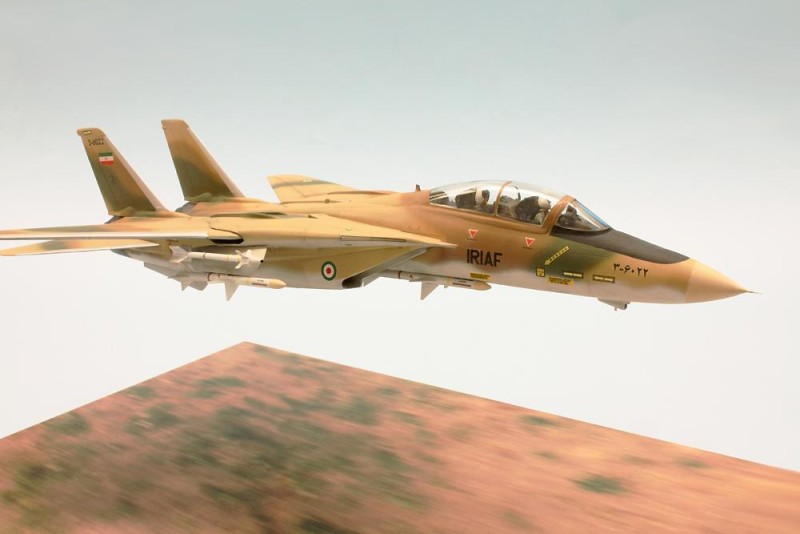
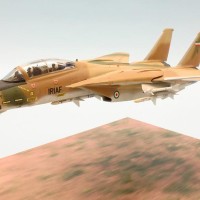

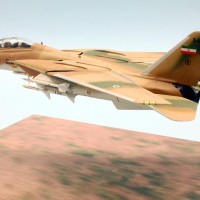
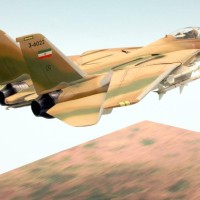
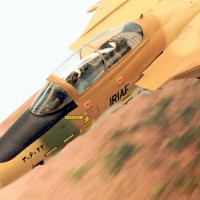
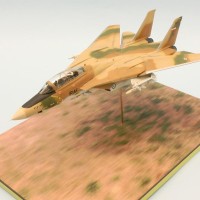
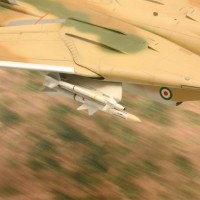
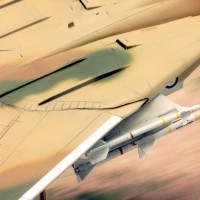
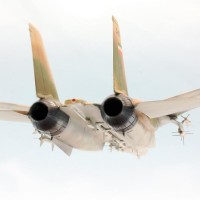
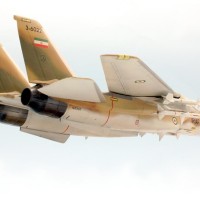
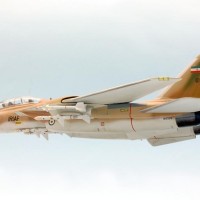
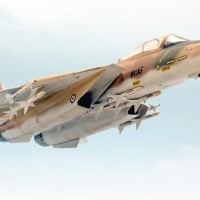
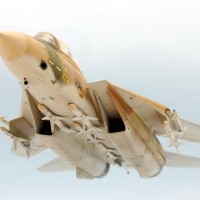
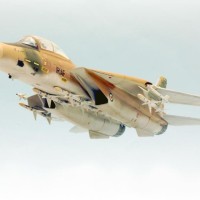
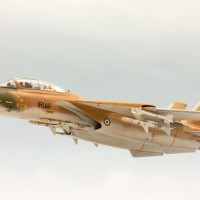
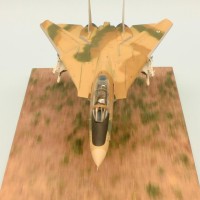

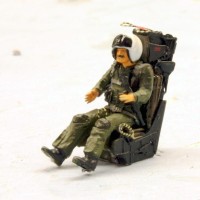
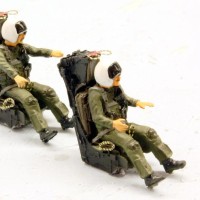
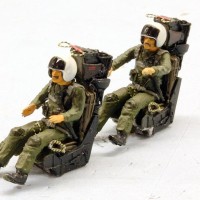
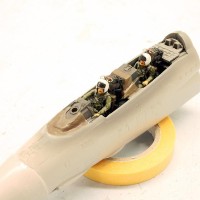
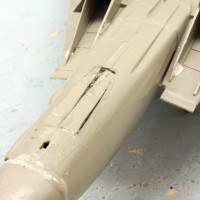
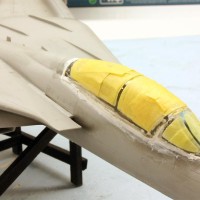
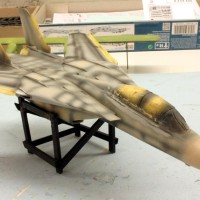
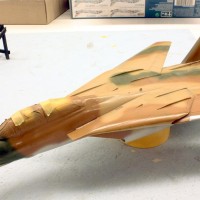
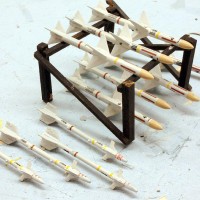
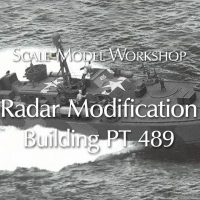
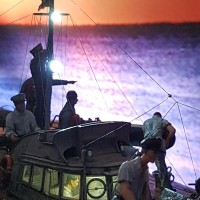
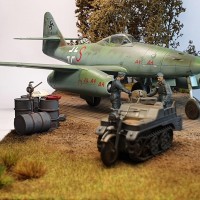
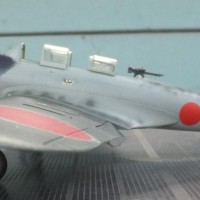
Another fantastic job, Roland! The departure from the original (not that great) Italeri kit is devastating, your skills to overcome all kits shortfalls quite remarkable!
Loved the base, as well, suits the Tomcat nature.
As always, your "historical" part was exquisite, I joyfully read all details, of which many for the first time.
Congratulations my friend on yet another superb modeling project!
Amazing result, Roland @rosachsenhofer
The way you pictured this wonderful aircraft is really great.
A high speed Tomcat in desert scheme, what more to wish.
Thanks for the historical background as well.
Armed to the teeth, low and fast. Very interesting build and well done.
Great work with this kit Roland - the Tomcat certainly looks good in this colour scheme!
Roland,
There are three elements to a good article, a great model, excellent photography and the written word.
Many modeling sites cater to great models and photography but, few offer a good written article. Now that Youtube has come onto the scene the written word is replaced with music and unscripted comments. But, the written word with a good story arc, a beginning, middle and end is to be savored like a good Scotch, wine or Tea.
Savored, remembered and serve as teachable moment that points the reader into wanting to know more about the subject and kick starts a readers curiosity of the subject being written. You've done this with the F-14 article.
Two thumbs up on all three accounts, guilty as charged.
Great model, I can't even see the metal rod!
Great result! I also want to try these kind of diorama Yours look really lively and the camuflaged F-14 make it look even better.
Really nice work on the model @rosachsenhofer, and a superb result (as usual).
Super material on the Iranian operation of the F-14 in the war. "Can't Investigate Anything" and the rest of the oxymoron that is "U.S. intelligence" couldn't find their broad posteriors with both hands on a clear day with a 4 hour advance notice, so their failure in determining what the Iranians were doing with these airplanes is unsurprising.
As an aside, back about 8 years ago, the US government went through every air museum that had been given F-14s and forced them to either give back the airplanes or allow the government to strip the guts out of the display airplane, leaving a shell, because they thought the Iranians were getting canopies from the museums (as if the Iranian's had no plastic casting industry) and other items (which they weren't).
What remarkable information!
Nice work, looks great! I've done the Amt/ertl F-14, boy was that a dog of a kit. At last count there are roughly 80 F-14s on poles or in museums plus a number of forward fuselage displays. Here's a fantasy scenario. Pull them all from the displays and rebuild them into F-14 Advanced, what Grumman had wanted to build before it was decided to go for the FA-18E/F. at 80 units you have a sizable air force.
Very nice Tomcat, and looks really "speedy" above that base. Nicely done!
Very nice Tomcat, and looks really "speedy" above that base. Nicely done! Those Italeri kits are a mixed bag - I have gotten into the routine of knowing I will have to sand them down and rescribe!
I would like to thank you all very much for your interest and feedback! It is really nice to be so motivated by such remarkable personalities! I feel honoured!
Amazing Tomcat and so great to see it out of it's usual grey - you built it beautifully and the base you did with it looks incredibly - when I first saw it, before I read your text I thought you'd done something amazing with magnets or something. Well done.
Thank you very much, I am very happy about your positive words!
I agree with Stephen’s comments above, all three elements of your post complement each other perfectly, who needs You-tube?
Thank you alot, George!